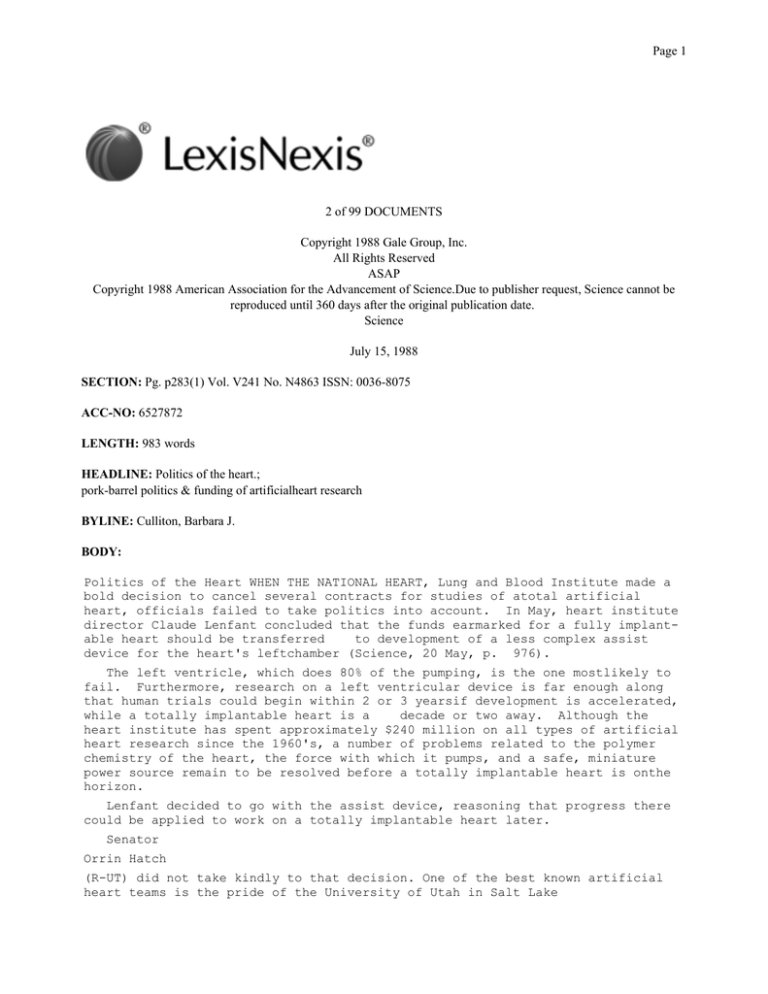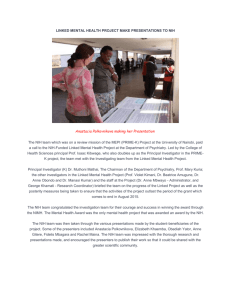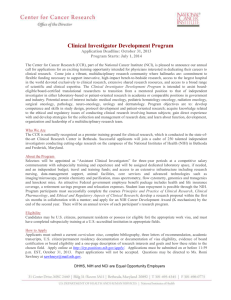
Page 1
2 of 99 DOCUMENTS
Copyright 1988 Gale Group, Inc.
All Rights Reserved
ASAP
Copyright 1988 American Association for the Advancement of Science.Due to publisher request, Science cannot be
reproduced until 360 days after the original publication date.
Science
July 15, 1988
SECTION: Pg. p283(1) Vol. V241 No. N4863 ISSN: 0036-8075
ACC-NO: 6527872
LENGTH: 983 words
HEADLINE: Politics of the heart.;
pork-barrel politics & funding of artificialheart research
BYLINE: Culliton, Barbara J.
BODY:
Politics of the Heart WHEN THE NATIONAL HEART, Lung and Blood Institute made a
bold decision to cancel several contracts for studies of atotal artificial
heart, officials failed to take politics into account. In May, heart institute
director Claude Lenfant concluded that the funds earmarked for a fully implantable heart should be transferred
to development of a less complex assist
device for the heart's leftchamber (Science, 20 May, p. 976).
The left ventricle, which does 80% of the pumping, is the one mostlikely to
fail. Furthermore, research on a left ventricular device is far enough along
that human trials could begin within 2 or 3 yearsif development is accelerated,
while a totally implantable heart is a
decade or two away. Although the
heart institute has spent approximately $240 million on all types of artificial
heart research since the 1960's, a number of problems related to the polymer
chemistry of the heart, the force with which it pumps, and a safe, miniature
power source remain to be resolved before a totally implantable heart is onthe
horizon.
Lenfant decided to go with the assist device, reasoning that progress there
could be applied to work on a totally implantable heart later.
Senator
Orrin Hatch
(R-UT) did not take kindly to that decision. One of the best known artificial
heart teams is the pride of the University of Utah in Salt Lake
Page 2
Politics of the heart.; pork-barrel politics & funding of artificialheart research Science July 15, 1988
City. Furthermore, Hatch is up for reelection. An unexpected decision by scientists in Washington to withdrawfunds was not welcome, especially in light of
the fact that the contracts had just been made in January.
Hatch, ranking Republican on the Senate committee that oversees the
NIH
budget, called Lenfant to demand a change of heart. Hatch alsodrafted unprecedented legislation that would prohibit NIH from cutting existing programs by
more than 10%. Senator Edward M. Kennedy (D-MA), chairman of the Senate's NIH
budget committee, took Hatch's side.
A Massachusetts company that is collaborating on artificial heart studies with the Texas Heart Institute is one of
four groups slated to
lose funding.
NIH saw the light. Informed sources report that once it was evident Hatch
and Kennedy "were ready to play hardball," NIH director James
B. Wyngaarden
insisted that money for artificial heart research be restored. The sum total
for this year is only $3 million out of the heart institute's total budget of
close to $1 billion. Three millionseemed a small price to pay to get Hatch to
drop the threatened legislation.
"A provision requiring us to meet all existing commitments before making new
funding would be devastating," Wyngaarden says. Although NIH seldom drops a
program altogether, what is euphemistically known as "downward negotiations"
are common in this time of tight budgets and many grants are cut more than 10%
in the second or third year. Lenfant heartily concurs. "The legislation would
have been a disaster,"he says.
But there will be a price to pay if a clinical trial of the left ventricular
device is to get started. "We may have a $1-billion budget," Lenfant says,
"but only $63 million of that is for contracts. Now, to go forward with the
ventricular assist, we may have to take money from the grants pool which means
there may be 20 or more fewer grants this year." No final decisions will be
made until the heart institute council meets in September.
The crucial question raised by this incident over the artificial heart is
whether Congress is taking an increasingly heavy hand in whatscientists regard
as the micromanagement of NIH by outsiders. It is hard to know, but many NIH
leaders are not happy that they were forced
to make such an unambiguous and
public retreat. And, although it is
true that there are legitimate arguments pro and con over the scientific merits of the heart institute's decision,
the fact is that it retreated for political reasons. Lenfant says he can live
with that, but he would like now to meet with Hatch to talk about what will
happen 3 or 4 years from now when the contracts expire. "I would like a real
debate on the scientific priorities," Lenfant says--"perhaps a hearing."
A strong congressional hand in NIH affairs is not unheard of. In ways both
large and small it has happened many times before. During the past decade,
Congress has created several new institutes, in every
case over the objections of the NIH leadership. The most recent unwanted addition was the National Institute of Arthritis and Musculoskeletal and Skin Diseases. The NIH leadership has consistently arguedthat new institutes are not necessary for good
research but consume in administrative costs millions of dollars that could
otherwise be spent on science.
But Congress and lobbyists for special causes like the visibility that goes
with a disease-specific institute. It is probable that an institute for deafness will spring from the heights of Capitol Hill in
the near future.
On a smaller scale, Congress has occasionally forced its will on the institutes, but with less public attention. For instance, when NIH
wanted to
phase out its cystic fibrosis unit on grounds that betterresearch was being
Page 3
Politics of the heart.; pork-barrel politics & funding of artificialheart research Science July 15, 1988
supported elsewhere through the grants program, asenator intervened on behalf
of a Washington area couple whose childwas being treated at the NIH hospital.
And when the institutes decided that they could fund only eight centers to
study sickle cell anemia, congressmen from Ohio and Massachusetts put through
an amendment requiring NIH to fund ten sickle cell centers in all. It is no
surprise that the ninth center on the NIH priority list was in Boston and the
tenth in Cincinnati.
The NIH's struggle for freedom from political interference has been
going
on for years. For its side, NIH has the power of scientific reasoning; Congress has plain power. It is not a level playing field.
GRAPHIC: photograph
illustration
LOAD-DATE: March 31, 2008
102P4K
********** Print Completed **********
Time of Request: Friday, October 15, 2010
Print Number:
2842:247634471
Number of Lines: 94
Number of Pages: 3
Send To:
WINEGAR, BRIAN
HOUSTON UNIVERSITY OF
12 LAW LIBRARY
HOUSTON, TX 77204-6054
20:59:39 EST






